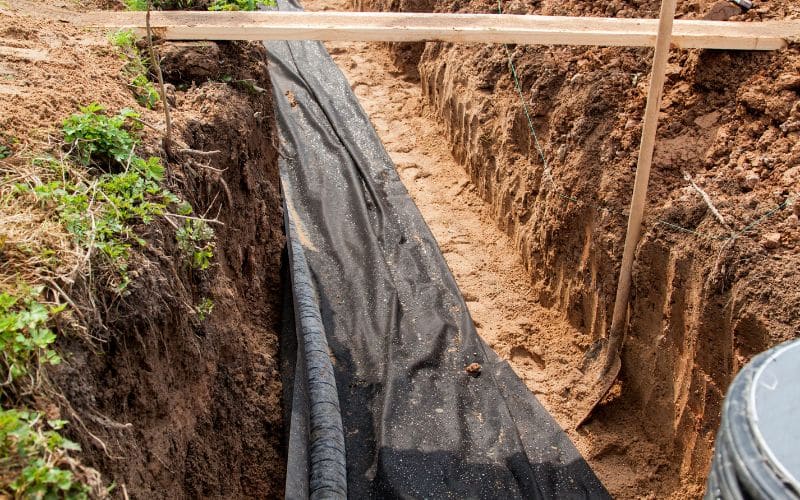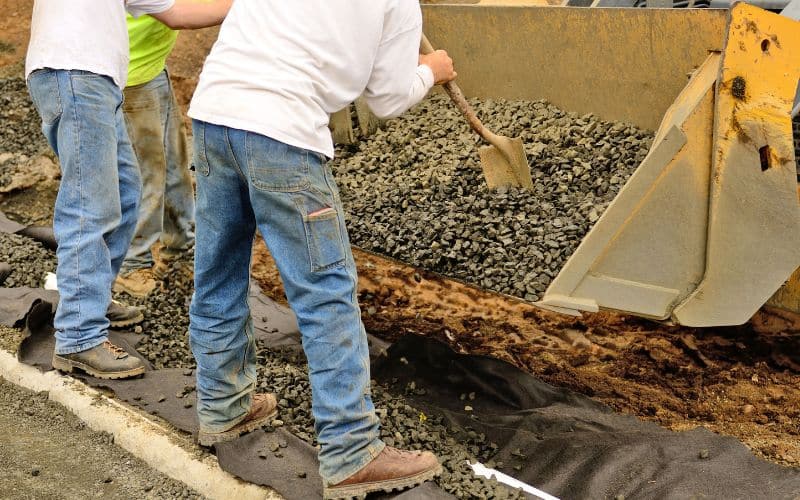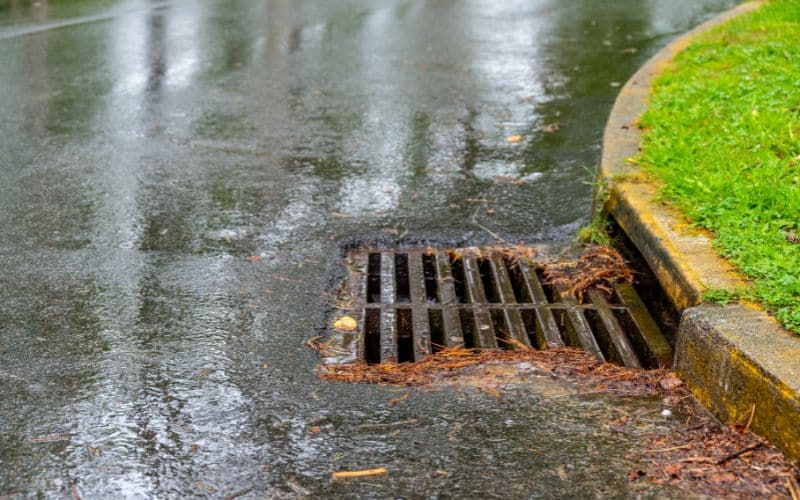
The Buzz Around French Drains and Permits
Picture this: You’ve just had a torrential downpour, and your yard is more of a swamp than a sanctuary. Enter the French drain, your go-to solution for turning that waterlogged mess into a well-drained paradise. But hold on, before you start channeling your inner landscaper and dig that first trench, a crucial question looms large: “Do I need a permit to install a French drain?” It’s a question that can make or break your drainage dreams, and we’re here to sift through the complexities and give you the clear-cut answers you need. Let’s dive in, shall we?
What is a French Drain? Understanding the Basics
A French drain is essentially a trench filled with gravel that redirects excess water away from an area prone to water accumulation. It usually contains a perforated pipe that allows water to flow into the drainage system. Think of it as your landscape’s personal sump pump, diverting water away from areas like your basement.
Why Consider Installing a French Drain in Your Yard?
Imagine stepping into your basement only to find it’s turned into an indoor pool, or watching your once-lush garden transform into a muddy quagmire after a heavy rain. Not exactly the stuff of homeowner dreams, right? This is where a French drain comes into play. It’s not just a quick fix; it’s a long-term solution that tackles the root of the problem. By strategically diverting excess water away from vulnerable areas like your basement or garden, a French drain serves as a reliable guardian against the costly and stressful nightmare of water damage. So, if you’re tired of battling the elements and want to reclaim your property, a French drain might just be the hero you’ve been waiting for.

The Anatomy of a French Drain System: From Trench to Topsoil
Building a French drain involves digging a trench, lining it with gravel, and installing a perforated pipe. The trench should be sloped to direct water away from the problem area. Once the pipe is in place, it’s covered with more gravel and then topsoil. It’s a straightforward drainage system that can make a world of difference in your yard.
How Much Does a French Drain Cost? A Budget Breakdown
The cost of installing a French drain can vary, but you’ll need to budget for materials like gravel and perforated pipe, as well as labor if you’re not going the DIY route. On average, you could be looking at anywhere from $1,000 to $4,000, depending on the complexity of the drainage system.
Do You Need a Permit to Install a French Drain? The Million-Dollar Question
Here’s where the permit comes into play. In some areas, you absolutely need a permit to install a French drain. The permit requirements can vary by location, so it’s crucial to check with your local municipality. Failing to get a permit could result in fines or even the removal of your newly installed French drain.
What are the Permit Requirements for French Drains?
Navigating the maze of permit requirements for French drains can feel like you’re deciphering an ancient code. But don’t worry, we’re here to translate the legalese into plain English. You’ll likely need to submit a site plan that outlines where your French drain will be located. But that’s just the tip of the iceberg. You may also need to provide drainage calculations to prove that your system won’t turn your neighbor’s yard into a marshland. And let’s not forget about the potential sewer system inspection to ensure you’re not wreaking havoc on the community’s plumbing. In some locales, you might even need to bring in a certified professional to give your plans the green light. So, while it may seem like a lot of hoops to jump through, each requirement is designed to ensure that your French drain is a community-friendly solution to your water woes.
How to Get a Building Permit for Your French Drain Installation
Getting a permit usually involves submitting an application to your local building department, along with any required documentation. Once approved, you’ll receive your permit and can proceed with your French drain installation. Just make sure to keep that permit handy—you’ll need it for any inspections.
DIY French Drain vs. Professional Installation: What’s the Difference?
Thinking of installing a French drain yourself? It’s a tempting idea, especially if you’re comfortable with a shovel and a bit of hard work. The DIY approach offers the satisfaction of solving your drainage woes firsthand. But it’s not all smooth sailing. You’ll need to navigate permit requirements and the risk of unexpected obstacles, like hidden sewer lines.
Opting for a professional, on the other hand, eliminates the guesswork. They handle permits, ensure the drain is up to code, and deftly manage any surprises that come up. If you value peace of mind and a job well done, going pro might be your best bet.

Storm Drain vs. French Drain: Is There a Difference?
You’ve likely seen storm drains on city streets, swallowing up rainwater and sending it off to join a larger sewer system. They’re the heavy hitters in the drainage game, designed to manage water on a grand scale in public spaces.
In contrast, a French drain is the unsung hero of residential drainage. It’s a more straightforward system, focused solely on diverting excess water away from your property. While it may not have the same large-scale impact as a storm drain, its role in protecting your home from water damage is just as vital. So, while both serve the noble cause of water management, their applications and scale are what set them apart.
Conclusion: Navigating the Drainage System Maze—Permits, Costs, and More
So, do you need a permit to install a French drain? The answer is: it depends. Always check with your local authorities to understand the permit requirements in your area. Whether you choose to go the DIY route or hire a professional, a French drain can be a game-changer for your landscape, helping to divert water away and prevent water damage.








